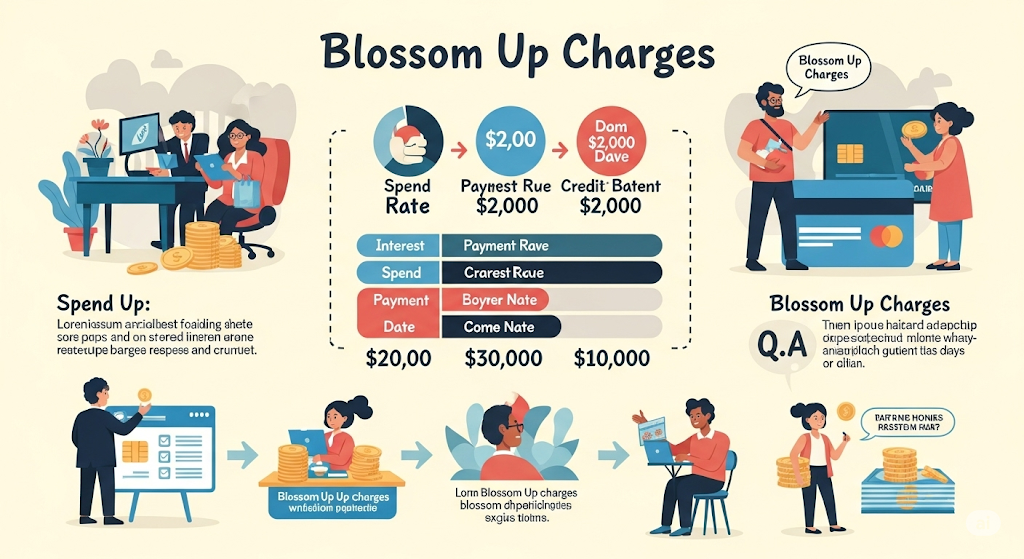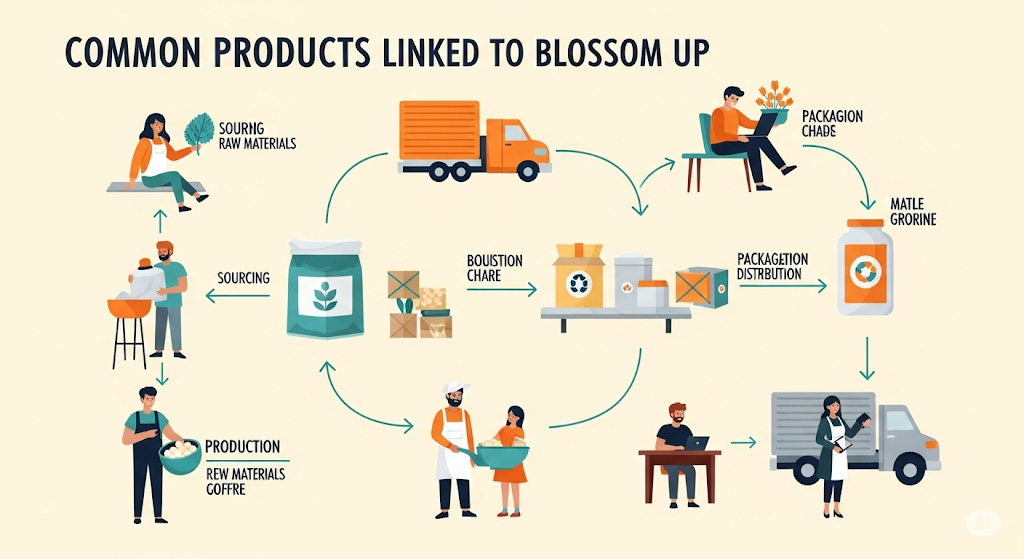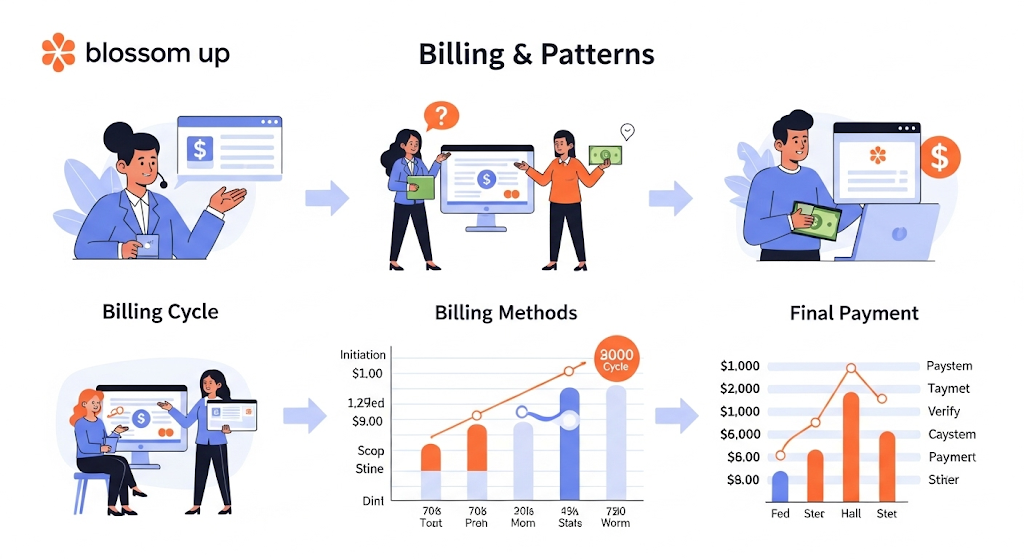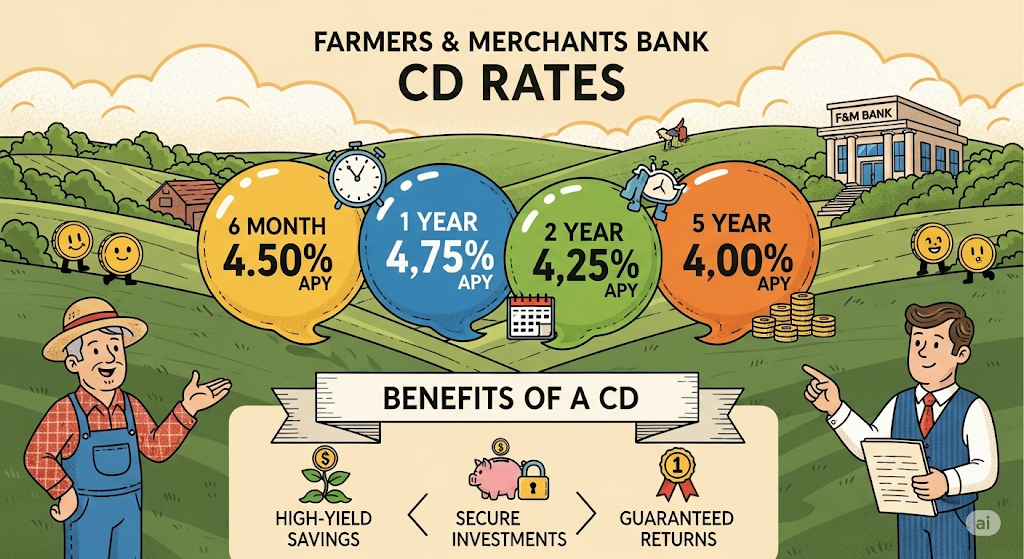
Blossom Up Charge on Credit Card: What It Is
Blossom Up Charge on Credit Card Have you stumbled upon a mysterious charge labeled “Blossom Up” on your credit card? Whether it reads something like BLOSSOMUP.COM, Blossom Up Subscription, or Blossom Up Wellness, you’re not alone—and you’re right to investigate.
In this deep-dive blog, we’ll cover everything you need to know about the “Blossom Up” charge:
- What company is behind it
- Why the charge appears
- How subscription traps work
- How to get your money back
- How to prevent future unauthorized or forgotten charges
Let’s dive into the world of online subscriptions, freemium offers, and recurring billing schemes that often leave consumers confused—and out of pocket.
Section 1: What Is the “Blossom Up” Charge?
A. The Billing Descriptor Mystery
When charges show up on your credit card, they don’t always match the company’s name you thought you were dealing with. Instead of “Beauty Skin Trial,” your bank statement might show:
BLOSSOMUP.COMBlossom Up HK WellnessBlossomUp SUBSCRIPTIONBLOSSOMUP USA
It’s easy to mistake this as a fraudulent charge—until you remember that you signed up for a “risk-free trial” of skin or wellness products a few weeks ago.
B. The Company Behind the Charge
“Blossom Up” is not a single product but rather a brand label used by multiple beauty and wellness companies—often based outside the U.S., such as Hong Kong, China, or Eastern Europe. These companies frequently operate under generic names and run heavy social media promotions.
Section 2: Why You Were Charged
A. The Free Trial Trap
This is how it typically works:
- You see a Facebook or Instagram ad offering a “Free Trial” of skincare, detox, or wellness pills—just pay shipping.
- You enter your card info to pay $4.95 or $6.99 for shipping.
- In the fine print (which most people skip), it says you’re agreeing to a monthly subscription if you don’t cancel within 7–14 days.
- You forget. Then suddenly, you’re charged $49.99, $69.95, or even $89.99.
The charge shows up as “Blossom Up,” a descriptor you’ve never seen before.
B. How Subscriptions Are Hidden
These practices, while shady, are often technically legal if the fine print is disclosed—even if the user experience is misleading. Some common tricks:
- Terms are in small gray text under the “Submit” button
- Countdown timers pressure you to buy quickly
- “Terms & Conditions” boxes are pre-checked
- No email confirmation of future billing
Section 3: Is It a Scam or Legitimate?
Let’s break this down into two angles:
A. Technically Legitimate
Yes, if you entered your card details and agreed to terms (even unknowingly), the charge may be valid. That’s why many banks won’t immediately label it as fraud.
B. Ethically Shady
But ethically, Blossom Up and companies like it operate in a gray zone. They use deceptive UX, misleading advertising, and bury key information in legalese to get users signed up for unwanted subscriptions.
Many customer complaints involve:
- “I only agreed to a sample”
- “I didn’t know I signed up for monthly charges”
- “Customer service is unreachable”
- “No refund even after I canceled”
Section 4: Common Products Linked to Blossom Up

Though the brand name may vary, here are some typical offerings tied to the Blossom Up charge:
| Product Type | Examples |
|---|---|
| Skincare creams | Anti-aging serums, eye gel, vitamin C creams |
| Detox supplements | Gummies, pills, “cleanse formulas” |
| Haircare kits | Growth oil, shampoo/conditioner bundles |
| Wellness programs | Monthly vitamin or CBD supplement subscriptions |
Many of these are dropshipped, white-labeled products promoted under a different name across multiple ads and funnels.
Section 5: What Users Are Saying Online
You’re not alone. Here are a few user-reported experiences:
“I clicked on an ad that said ‘Free Trial, just pay shipping.’ I got a sample cream, and 2 weeks later I saw a charge for $89.95 from Blossom Up.” — Sarah T., Miami
“I had no idea I signed up for anything recurring. They didn’t even send an invoice.” — Jason R., Chicago
“They billed me twice in one month. My bank told me the company is based overseas and difficult to reach.” — Kelsey D., Seattle
Hundreds of similar stories can be found on Reddit, TrustPilot, ScamPulse (BBB), and complaints boards.
Section 6: How to Handle the Charge
A. Step-by-Step Action Plan
- Check Emails
Look for order confirmations with Blossom Up, or variations like “Thank you for your trial,” “Skincare Kit,” etc. - Visit Their Website
Go to blossomup.com or the link in your receipt (if available) and try to find the cancellation or refund section. - Call or Email the Company
If you can find a phone number or support email, request cancellation immediately and ask for a refund. - Cancel Future Payments
Use your bank’s online portal to block future charges from the same merchant. - Dispute with Your Card Issuer
If no luck with the company, dispute the charge through your bank’s credit card portal or call customer service.
Section 7: How to Dispute the Charge With Your Bank
What to Say:
When contacting your card issuer:
- “I did not knowingly enroll in this subscription.”
- “I only approved a small trial payment, not full charges.”
- “I attempted to contact the merchant but received no response.”
- “I’d like to file a chargeback for unauthorized subscription billing.”
Most issuers will give provisional credit while they investigate.
Section 8: Preventing This in the Future
A. Tips to Stay Protected
- Avoid free trials that require credit card info
- Always read the terms on the checkout page (especially footnotes and small print)
- Use virtual credit cards for trials (offered by Capital One, Citi, etc.)
- Monitor your bank statements weekly, not monthly
- Enable real-time transaction alerts on your card
Section 9: Blossom Up’s Billing Practices – A Pattern

Companies like Blossom Up often register:
- Domains like
blossomup.com,blossom-up.org,blossombeautypro.net - Payment processors outside the U.S. (Hong Kong, Macau, Lithuania)
- Customer service numbers that don’t work or lead to a call center
They may also:
- Change product names every 6 months
- Rotate offers across 100s of landing pages
- Operate under multiple LLCs and brand aliases
This is a common tactic in subscription ecommerce schemes.
Section 10: Legal Status – FTC Warnings
The Federal Trade Commission (FTC) has taken action in similar cases:
- In 2020, the FTC sued multiple companies for “unfair recurring billing without clear consent.”
- FTC requires companies to have clear disclosure and easy cancellation options.
If you feel tricked or misled by Blossom Up:
- File a complaint at reportfraud.ftc.gov
Section 11: Frequently Asked Questions (FAQs)
1. Is “Blossom Up” a scam?
Not technically, but the way they enroll customers is often misleading. Many label it a scam due to deceptive marketing.
2. I never bought anything from Blossom Up. Why was I charged?
You may have bought from a different brand that uses Blossom Up as its billing processor.
3. Can I cancel the subscription?
Yes—if you can contact the company. If not, your bank can stop future payments.
4. Will I get my money back?
Sometimes. If the company refuses, your credit card company can process a chargeback.
5. Why is the amount so high?
Trial-based subscriptions often auto-convert into full-size product billing cycles. $49–$89 is common.
6. Is this charge monthly?
Usually yes. Unless canceled, these subscriptions will renew automatically every 30 days.
7. Should I get a new card?
If you cannot stop the charge and fear other fraud, yes—ask for a new card number.
8. Can I report this to authorities?
Yes. Report to the FTC and your state’s Attorney General.
9. Is Blossom Up connected to other companies?
Possibly. These operations often use different brand names for the same underlying company.
10. Can I sue them?
Yes, but small amounts usually don’t justify legal costs. File a BBB complaint or dispute via your bank first.
Conclusion
Seeing a “Blossom Up” charge on your credit card can be confusing, frustrating, and even feel like fraud. In most cases, it’s the result of a deceptive free trial or subscription offer tied to beauty or wellness products.
Here’s your recap checklist:
✅ Investigate the source via email and receipts
✅ Contact Blossom Up (if possible)
✅ Cancel and request a refund
✅ File a dispute with your credit card
✅ Monitor your account for recurring charges
✅ Avoid trial offers that ask for card info
❗ Stay vigilant, read the fine print, and never assume a “trial” means no strings attached.




